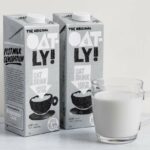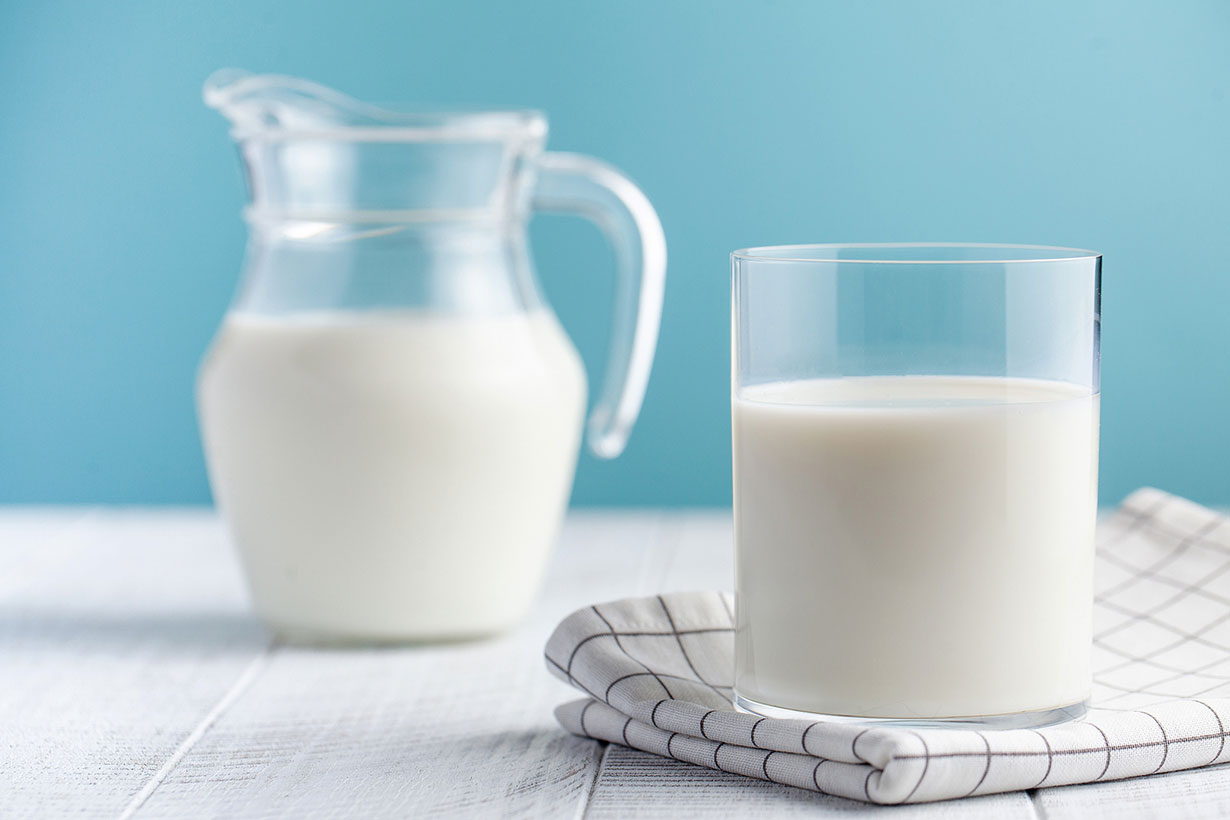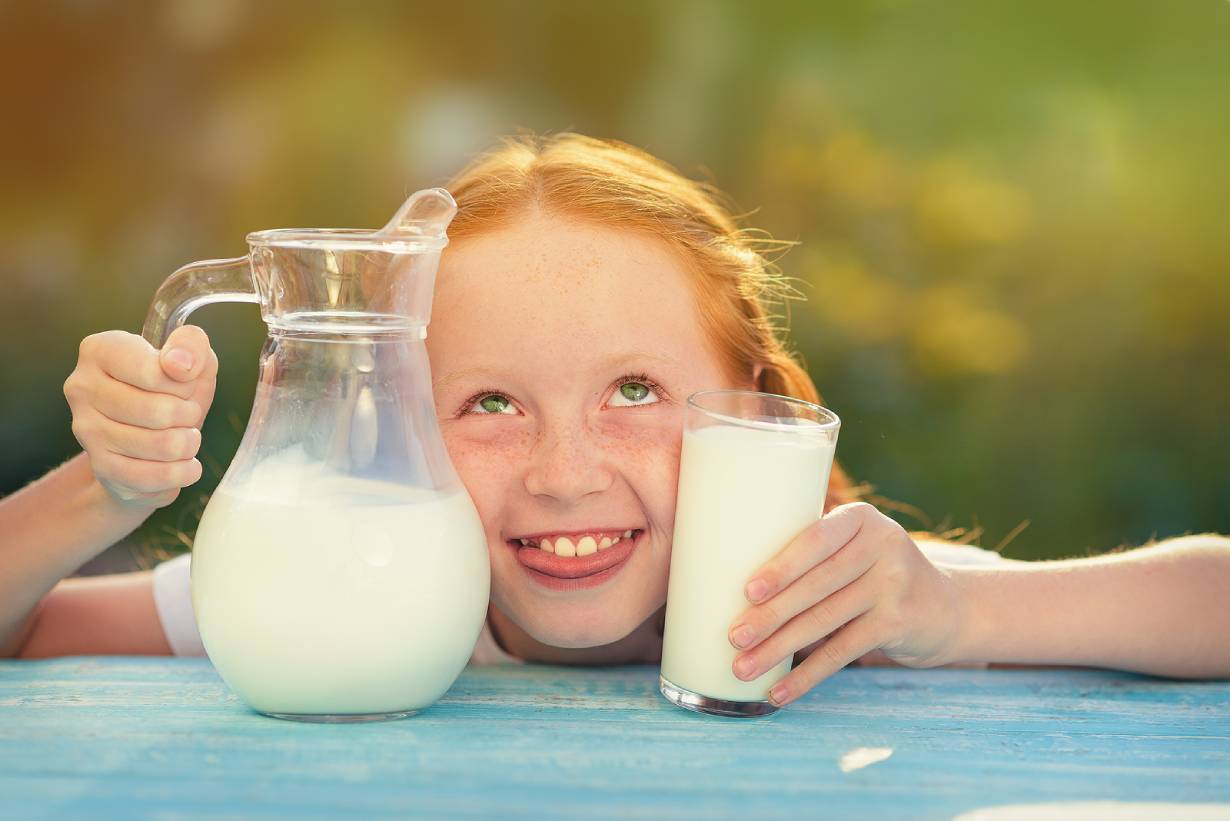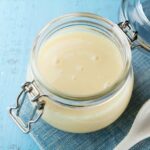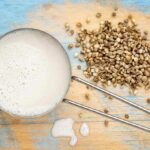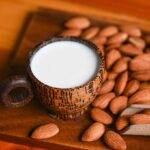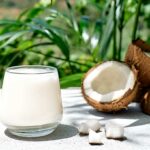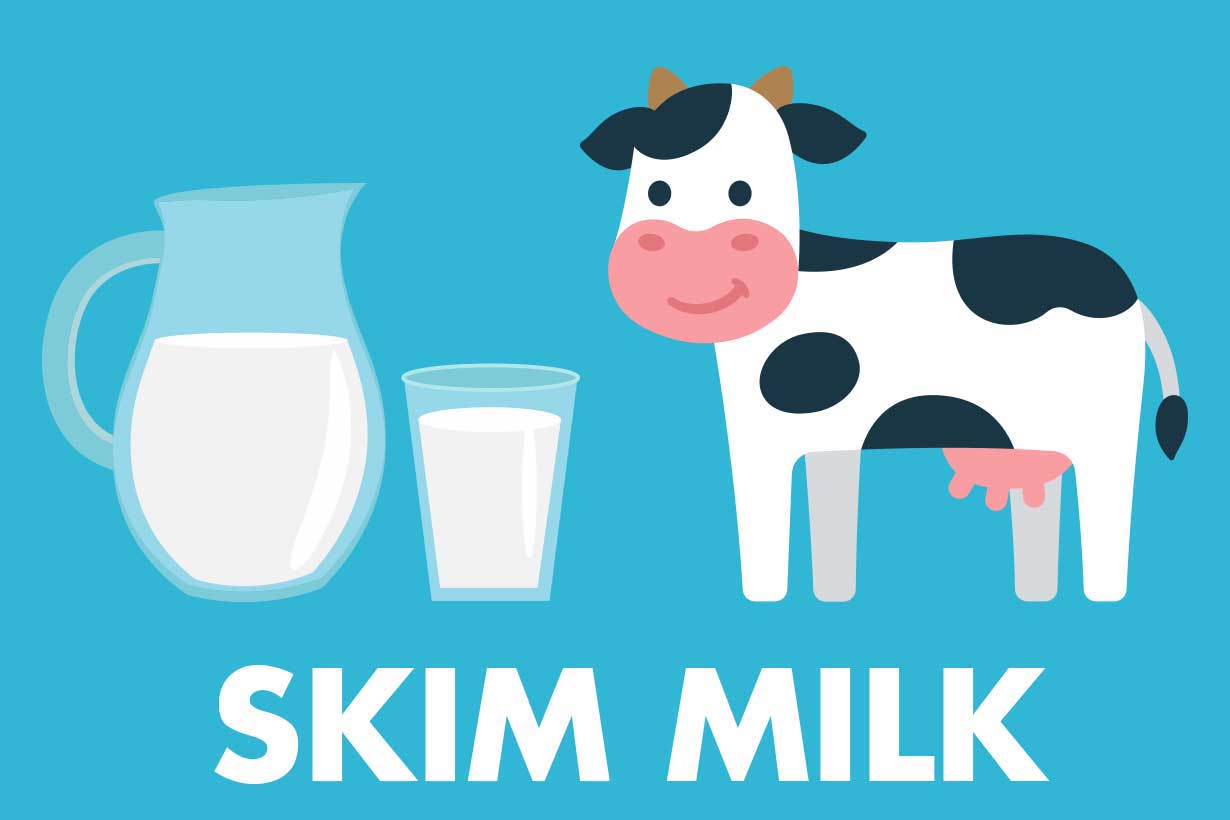Oat milk is one of the most popular types of milk, and predictions suggest substantial future growth in its market size.
However, what about its nutritional profile?
Is oat milk good or bad for you? And upon what criteria would this “good” or “bad” determination rest?
To provide clarity, this article delves into the nutritional attributes of oat milk, its characteristics, as well as its benefits and downsides. Additionally, we assess how it compares to other types of milk.
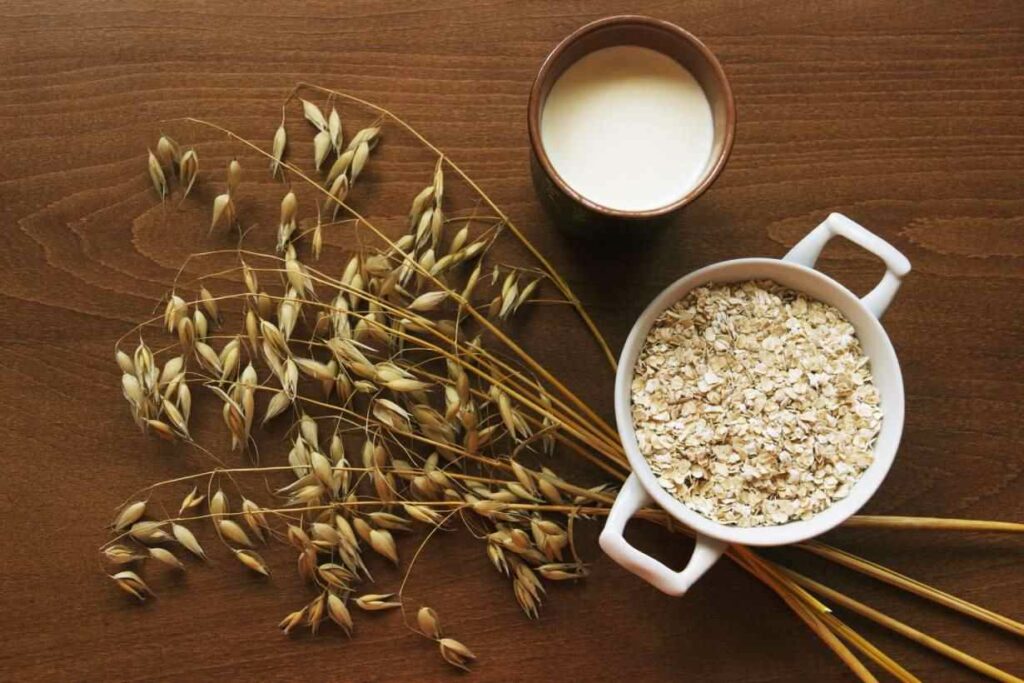
How Is Oat Milk Made?
Before exploring its nutritional values, let’s first examine oat milk’s production process.
Notably, oat milk was initially developed in 1990 by Professor Rickard Oste at Lund University, who established the company known as Oatly (1).
The actual production process utilized to create oat milk is quite straightforward (2, 3):
- Milling: Oats undergo milling to strip off their tough outer hulls and grind them into a fine powder.
- Mixing: Following milling, the soft oat powder is blended with water until it develops a thick and uniform liquid consistency.
- Enzyme treatment: During the mixing phase, the mixture may optionally undergo enzyme treatment to further break down the starch in oats. This step is thought to provide additional sweetness and flavor.
- Separation: Subsequently, oat milk undergoes a separation process employing various filters and a centrifuge to remove any remaining solids from the mixture.
- Addition of ingredients: At this stage, depending on the specific product, additional ingredients may be incorporated. These ingredients could include vitamins and minerals to fortify the milk, sweeteners, or oils.
- Homogenization and Pasteurization: Most commercially available oat milk products undergo homogenization and pasteurization. Homogenization ensures a consistent texture, while pasteurization involves subjecting the milk to high temperatures to kill any bacteria present, thereby extending its shelf life.
At present, oat milk is readily available on shelves in grocery stores worldwide and is a common offering in most coffee shops.
The global oat milk market boasted a value of $2.5 billion USD in 2022 and is projected to be worth $6.2 billion USD by 2030 (4).
The Ingredients Profile of Oat Milk
When considering the ingredients found in oat milk, the answer depends on the specific product.
This is because some oat milk products are fortified, which contributes additional vitamins or minerals, whereas others are not.
Furthermore, oat milk may undergo sweetening or the addition of oil to thicken its texture, but neither of these ingredients are universal.
Utilizing USDA data, the following table presents the ingredients profile of four distinct types of oat milk. This allows insight into some common examples of how oat milk products might differ concerning their ingredients (5, 6, 7, 8).
| Oat milk product | Ingredients | Fortified? | Sweetened? |
|---|---|---|---|
| Steuben Foods ‘Original Milked Oats’ | Filtered water, whole grain oats, cane sugar, salt, natural flavors | No | Yes |
| Steuben Foods ‘Unsweetened Milked Oats’ | Filtered water, whole grain oats, salt | No | No |
| Green Grass Foods, Inc ‘Original Barista Oat Milk’ | Water, whole oats, erythritol, high oleic sunflower oil, fava bean protein, dipotassium phosphate, calcium phosphate, natural flavors, salt, gellan gum | Yes | Yes |
| Oatly ‘The Original Oat Milk’ | Water, oats, rapeseed oil, dipotassium phosphate, calcium carbonate, tricalcium phosphate, salt, dicalcium phosphate, riboflavin, vitamin A, vitamin D2, vitamin B12 | Yes | No |
As the table illustrates, there is a wide range of oat milk products available on the market, and their ingredient profiles can vary significantly. This underscores the importance of checking the product label for precise ingredients information, particularly when seeking a specific type of oat milk.
What Benefits Does Oat Milk Have?
Oat milk offers several potential benefits based on its composition. Here are some of the primary advantages it may provide.
Lactose-Free and Vegan-Friendly
While dairy milk can offer a range of nutritional benefits, it is not suitable for all groups of people.
Some individuals who cannot, or choose not to, consume dairy milk include those with lactose intolerance and vegans.
Lactose intolerance occurs when an individual has difficulty digesting milk sugar, known as lactose. This condition is caused by a deficiency in an enzyme called lactase, responsible for breaking down lactose. Consumption of lactose-containing foods can result in symptoms of digestive discomfort for those who are lactose intolerant (9, 10).
Since oat milk is lactose-free, it serves as a suitable milk alternative for individuals with lactose intolerance.
Additionally, as oat milk contains no animal products, it is a vegan-friendly option.
May Lower LDL Cholesterol
Elevated levels of LDL cholesterol (LDL-C) are associated with an increased risk of developing cardiovascular diseases (11, 12).
Certain foods and drinks can either increase or decrease LDL-C levels, and oat milk may belong to the latter category.
For instance, a randomized controlled trial investigated the effect of oat milk on LDL-C over four weeks. The results revealed that 750-1000 ml of oat milk per day led to a 9% decrease in LDL-C compared to baseline. Researchers attributed this effect to beta-glucan, a type of fiber found in oats, as well as the replacement of saturated fat in the diet (13).
Another randomized controlled trial involving sixty-six men found that five weeks of consuming 750 ml of oat milk per day led to a 6% decrease in LDL-C compared to a rice milk control drink (14).
Moreover, recent systematic reviews published in 2022 demonstrated that both oat supplementation interventions and beta-glucan intake consistently lower LDL-C levels (15, 16).
However, it is worth noting that consuming whole oats would provide higher levels of beta-glucan and overall fiber than oat milk.
Dairy-Like Consistency
There is a wide variety of milk available, each with its own unique properties.
In regard to oat milk, one notable advantage is its dairy-like consistency. Research in this area has identified that oat milk possesses more desirable “sensory characteristics” than other plant-based milks such as almond milk, largely due to its similar consistency and appearance to dairy milk (17).
This may explain why oat milk is frequently offered as a ‘milk alternative’ option in most coffee shops.
A Source of Vitamins and Minerals
As oats are the primary ingredient in oat milk, it naturally contains a range of essential nutrients. Furthermore, vitamin and mineral fortification may enhance its nutritional value.
Using data from the USDA’s FoodData Central database, the following sections outline the typical vitamin and mineral profile of fortified unsweetened oat milk per 240-ml cup serving.
Daily values (% DV) have been calculated using the FDA’s recommended daily values, which are based on a 2000-calorie diet (18, 19).
Vitamins
- Biotin: 3.4 mg (11% DV)
- Folate, DFE: 14 mcg (4% DV)
- Niacin: 0.23 mg (1% DV)
- Riboflavin: 0.67 mg (52% DV)
- Thiamin: 0.1 mg (8% DV)
- Vitamin B12: 1.2 mcg (50% DV)
- Vitamin A, RAE: 204 mcg (23% DV)
- Vitamin B6: 0.01 mg (1% DV)
- Vitamin D: 4.1 mcg (2% DV)
- Vitamin K: 1.0 mcg (1% DV)
As demonstrated, oat milk can be a good source of vitamins, including vitamins A and B12 when fortified.
Minerals
- Calcium: 355 mg (27% DV)
- Copper: 0.06 mg (7% DV)
- Iron: 0.62 mg (3% DV)
- Magnesium: 14.2 mg (3% DV)
- Manganese: 0.3 mg (13% DV)
- Molybdenum: 24.2 mcg (54% DV)
- Phosphorus: 213.6 mg (17% DV)
- Potassium: 355.2 mg (8% DV)
- Selenium: <6 mcg (11% DV)
- Sodium: 100.8 mg (4% DV)
- Zinc: 0.22 mg (1% DV)
Oat milk provides a significant source of calcium, copper, manganese, phosphorus, potassium, and selenium.
Contains Phytonutrients
Similar to regular oats, oat milk is a source of phytonutrients (20).
Phytonutrients, also known as phytochemicals, are bioactive chemicals found in plants that may offer health benefits. Dietary patterns high in phytonutrients are linked to a reduce risk of chronic diseases such as diabetes, cancer, and cardiovascular diseases (21).
The major phytonutrients found in oats include various phenolic acids and flavonoids, such as kaempferol, all of which are polyphenols (22, 23).
Once again, it is important to note that whole oats would provide higher levels of phytonutrients compared to oat milk, as the former is not diluted with water.
Does Oat Milk Have Any Downsides?
Now that we have explored the potential benefits of oat milk, let’s delve into its downsides.
Low Protein Content
One of the primary drawbacks of oat milk is its low protein content.
Although many people associate “milk” with being a protein source, this is not really the case with oat milk.
According to USDA data, a standard 240-ml cup of oat milk provides only 1.92 grams of protein. In contrast, a cup of regular dairy milk or soy milk typically supplies around 8 grams of protein (18, 24, 25).
While this may not pose an issue for individuals who already obtain sufficient protein from their diet, it’s clear that dairy and soy milk are superior choices for those seeking milk as a protein source.
May Potentially Contain Gluten
Despite oats being naturally gluten-free, they can often be subject to cross-contamination with grains that do contain gluten (26).
This consideration is crucial when selecting an oat milk for individuals with celiac disease or any degree of gluten intolerance. It is prudent to presume that oat milk contains gluten unless explicitly labeled as ‘gluten-free.’
For more information on this important topic, please refer to the following article:
Rare Potential Allergies
Although allergic reactions to oats are relatively uncommon, there are reports of them in the scientific literature (27).
As always, individuals who suspect they may have an oat allergy should seek medical advice.
How Does Oat Milk Compare To Dairy Milk?
Let’s now assess how oat milk compares nutritionally to dairy milk.
For a quick overview, the following table presents the basic nutritional profiles of oat milk, whole dairy milk, and skim dairy milk.
All nutritional data is sourced from the USDA’s FoodData Central database (18, 24, 28):
| Name | Oat milk (240g cup) | Whole dairy milk (244g cup) | Skim dairy milk (246g cup) |
|---|---|---|---|
| Calories | 115 kcal | 149 kcal | 84 kcal |
| Carbohydrates | 12.2 g | 11.3 g | 12.1 g |
| Fiber | 1.8 g | 0 g | 0 g |
| Sugars | 5.57 g | 11.7 g | 12.4 g |
| Fat | 6.6 g | 7.81 g | 0.2 g |
| Saturated | – | 4.54 g | 0.12 g |
| Monounsaturated | – | 1.68 g | 0.04 g |
| Polyunsaturated | – | 0.26 g | 0.02 g |
| Protein | 1.92 g | 7.98 g | 8.44 g |
| Cholesterol | 0 g | 29.3 g | 7.38 mg |
| Sodium | 101 mg | 92.7 mg | 101 mg |
As indicated in the table, oat milk falls in between whole and skim milk in terms of calorie count. It contains a similar amount of carbohydrates, but some of these are fiber, which is absent in dairy milk.
Oat milk has a lower fat content than whole milk but contains more than skim milk. Additionally, the protein content of oat milk is significantly lower than that of dairy milk.
The sugar content of oat milk is approximately half that of dairy milk.
Lastly, oat milk contains no cholesterol and supplies a similar amount of sodium as dairy milk options.
Nutrient Provision
When comparing oat milk to dairy milk, it’s essential to consider their respective micronutrient profiles – the vitamins and minerals they each offer.
While fortified oat milk may provide a similar micronutrient profile, unfortified oat milk lacks several essential nutrients found in dairy, most notably vitamin B12.
A 2021 study published in the Academic Pediatrics journal conducted a nutritional comparison of cow’s milk and ‘alternative milk products’ (29).
This study observed that while oat milk contains comparable amounts of calcium to dairy milk, it has significantly lower levels of protein. Additionally, the provision of other nutrients, such as vitamin D, varies significantly between brands depending on fortification.
The study concluded that ‘cow’s milk still remains the best source of fats, protein, and micronutrients‘ (29).
To explore how oat milk compares to all popular types of milk, refer to this article:
24 Types of Milk and Their Nutritional Values
How Long Does Oat Milk Last?
Another crucial point to note is that the shelf-life of oat milk can vary between products.
One reason for this variation is whether the oat milk product has undergone pasteurization at high heat. This ultra-high-temperature (UHT) pasteurization process kills bacteria, resulting in a longer shelf-life (17).
UHT oat milk products do not require refrigeration and can be stored for several months before opening. Once opened, they should be consumed within about five days.
On the other hand,oat milk products that are not UHT pasteurized are commonly found in store chillers. These products have a shorter shelf-life and typically need to be used within 1-2 weeks.
As always, it is essential to check and adhere to the usage dates and storage instructions on product labels.
How To Use Oat Milk
Oat milk can be used in the same way as dairy milk. Some common uses may include:
- Hot drinks: Add a little oat milk to tea or coffee, or use it to make hot chocolate.
- Milkshakes and smoothies: Oat milk works well as a base for milkshakes and smoothies when blended with various fruits.
- As a drink: Some people enjoy consuming a glass of oat milk on its own.
- Soups and stews: Use oat milk as a thickener to add texture to soups and stews.
- Cereal: Pour oat milk over cereal.
- Baked goods: Use oat milk in recipes that call for milk.
- Porridge: Make porridge with oat milk.
Is Oat Milk a Healthy Choice?
Determining whether oat milk is a “good” or “bad” choice depends on context and its intended use.
For vegans or individuals with lactose intolerance, oat milk can be a suitable option. However, soy milk might be preferable in this scenario if protein is a priority.
Switching from dairy milk to oat milk may not be advisable if the former’s protein and vitamin B12 content are not adequately replaced elsewhere in the diet. This consideration applies to other nutrients, such as vitamin D, in the context of unfortified oat milk.
For those that enjoy oat milk, it can be part of a healthy dietary pattern. However, choosing a product fortified with essential nutrients is preferable.

